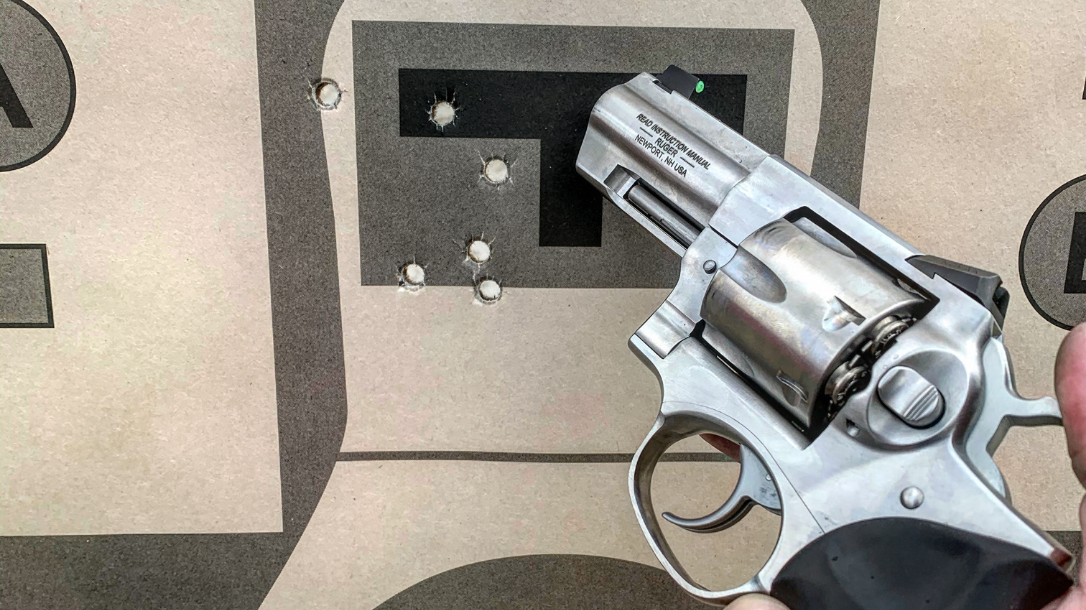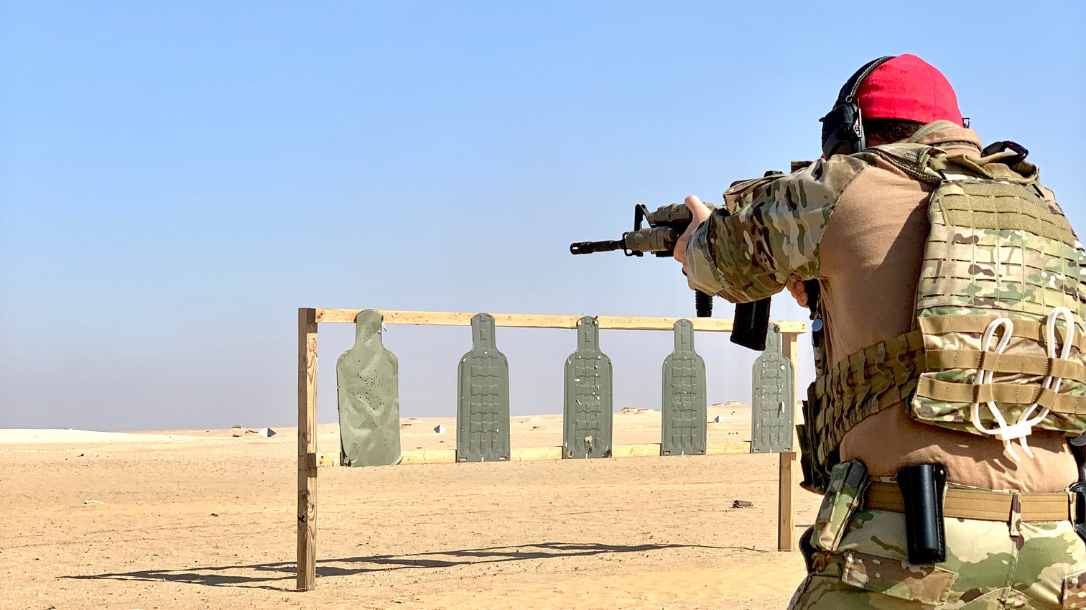After Saturday’s mass casualty event in Buffalo, I spent a good chunk of Sunday chatting with colleagues of mine about tactics for stopping an active shooter. I’m fortunate to be able to have these conversations with former Green Berets, members of FBI SWAT, and major SoCal metro law enforcement officers. Their direct experiences with violence provide valuable insight on managing the changing threat dynamic of these types of attacks.
Stopping An Active Shooter is More than Gear
Drawing lessons from the Buffalo attack, we first look to the heroic sacrifice of Aaron Salter Jr, who engaged the attacker but failed to incapacitate him. Aaron got hits on the target, but the attacker’s body armor defeated the pistol rounds.
The Buffalo attack marks the second time in recent memory that an attacker has targeted a grocery store using a long gun and wearing tactical gear. Which brings us to the first conclusion, unanimously agreed on by the experts I spoke with. If you’re present for an active shooter event and the attacker is wearing any sort of tactical vest or gear, assume it’s body armor and adjust your aim accordingly.
Advertisement — Continue Reading Below
Effective Targeting Areas for Stopping an Active Shooting
That brings us to the next part of the equation: if the “center of mass” that we’re all so well trained to target isn’t available, what do we shoot at? Countless real world officer involved shootings and military gunfights have shown us that head shots are extremely effective at stopping fights. In fact, there are a considerable number of documented instances where a head shot that failed to penetrate the skull still dropped the attacker to the ground.
In these scenarios, we’re disregarding the traditional logic of a failure drill. That’s because based on recent attacks, you may not have time to re-engage. So, as we noted above: if you see tactical gear, take head shots.
But What if the Head Shot Isn’t There?
None of the experts I spoke with advocated shooting the pelvic girdle first. Shooting the pelvic girl or other unarmored parts is a target of last resort. In this instance, you’re just trying to put rounds into the attacker. If you don’t have a head shot available, the goal is to then put bullets into whatever target zone you have. Hopefully it will cause a reaction in the attacker that will give you a better target zone.
Advertisement — Continue Reading Below
That being said, it’s important to understand a few things about targeting areas other than the head or chest. First, shooting the pelvic girdle with a handgun isn’t a reliable stopper. Handguns don’t shatter bones like rifles and shotguns do. There’s a considerable amount of luck involved in getting a fight stopping hit with a handgun to the pelvic region.
Secondly, even if your handgun bullet shatters the femur or hip joint, that doesn’t mean the fight’s over. A determined attacker with a broken leg is still plenty capable of shooting a gun. So our third point is a reminder. We shoot at less desirable target areas in hopes of creating a desirable target area.
Skills Not Gear

Advertisement — Continue Reading Below
When we’re talking about stopping an active shooter, it’s easy to get rolled up in a gear discussion. The internet loves gear after all. So you’ll get people talking all kinds of nonsense about truck guns, or which gun is best, etc etc. Let’s be very clear. It doesn’t matter if you’re carrying the best gun in the world. You could have a Wilson Combat EDC X9L with a red dot, but if you can’t get hits on command, that gun is a paperweight.
Let’s think about grocery stores for a second. Smaller in-city stores can have aisles that are 15-25 yards long. A Costco or Sam’s Club can quadruple that distance. There are easily 100 yard shots in a big box store. For years tactical trainers have talked about how the “typical” civilian gunfight is “3 yards, 3 rounds, 3 seconds.” And that’s a perfectly acceptable baseline of competence. However, it doesn’t reflect the skills necessary for stopping an active shooter.
Here’s an easy test. Get a box of 3×5 index cards, and put one of those on a target. Start at 5 yards, and keep moving back until you can’t get a first shot hit on the index card. A 3×5 index card happens to be extremely similar in size to the eye/nose box that experts agree is an optimal target zone for immediate incapacitation.
Advertisement — Continue Reading Below
Can you make a head shot at 15 yards on a range by yourself with no time limit? Be honest with yourself. If you can’t, there’s no shame, but maybe it’s time to focus your practice on something other than sub-second draws and bill drills on giant steel targets at 10 yards.
Absolute Accountability
While we’re talking about skills, there’s something else that we need to discuss. In a situation like the Buffalo shooting, if you’re fighting back, you have to be absolutely accountable for every round you fire. Let’s say you can make a 15 yard head shot on the range. Can you make that same shot when there are innocent people running around? When the attacker is partially concealed by the store aisles?
The bad guys have the advantage here. They don’t care what their rounds hit, but your rounds can only hit the bad guy, or nothing at all.
Advertisement — Continue Reading Below
Tactics Matter

Let’s say you can make that 15 yard head shot. Let’s say you’re fast and accurate. But you’re standing in the middle of aisle down range from someone with a rifle. This is where tactics and situational awareness matter, because you can be a good shooter and still get smoked because your tactics suck. But if you’re not a good shooter, you’re super focused on the gun problem, and that’s eating up brainpower that could be used to make tactical decisions. One of our experts, the former FBI SWAT member commented to me that it was better to move to an advantageous position and make a 5 yard head shot if you could. But to do that, you have to be aware of that as an option.
Train Accordingly
If you’re really serious then about stopping an active shooter, you have to train accordingly. You need to develop the marksmanship skills to hit a target the size of an orange on command from distances well over 5 yards. You then need to develop the automaticity with your marksmanship skills so that your brain can successfully process the tactical situation and not be overloaded by the shooting problem.
Advertisement — Continue Reading Below
But how do we get these skills? If you’re an armed professional or a CCW holder, it means spending your own time and money to acquire them. You have to take classes from quality instructors to develop the skills, then pressure test your marksmanship skills in competition shooting. You can pressure test your tactics in well structured force on force. And then you repeat that cycle regularly to keep the sword sharp.
But lastly, and yet most importantly, you must posses the will to fight. Aaron Salter Jr had the will to fight. That’s not a decision you can make in the moment. You, as a cop, a soldier, an airman, a Marine, or an armed citizen have to sit down and really think this through. Think what you’re willing to fight, and possibly die for. Think what you’re willing to risk your financial freedom, your personal freedom, and your life for.
Because you can have good tactics and be a great marksman, but if you lack the will to fight, you’ll fail.
Advertisement — Continue Reading Below
























